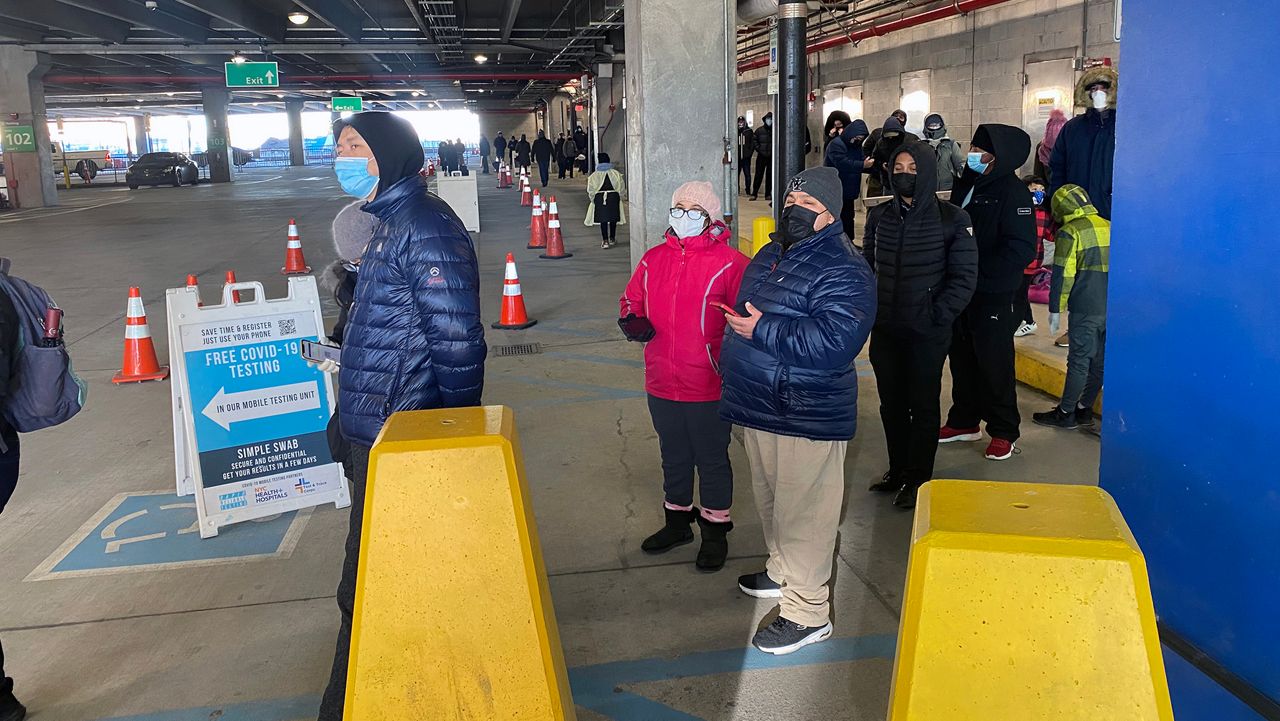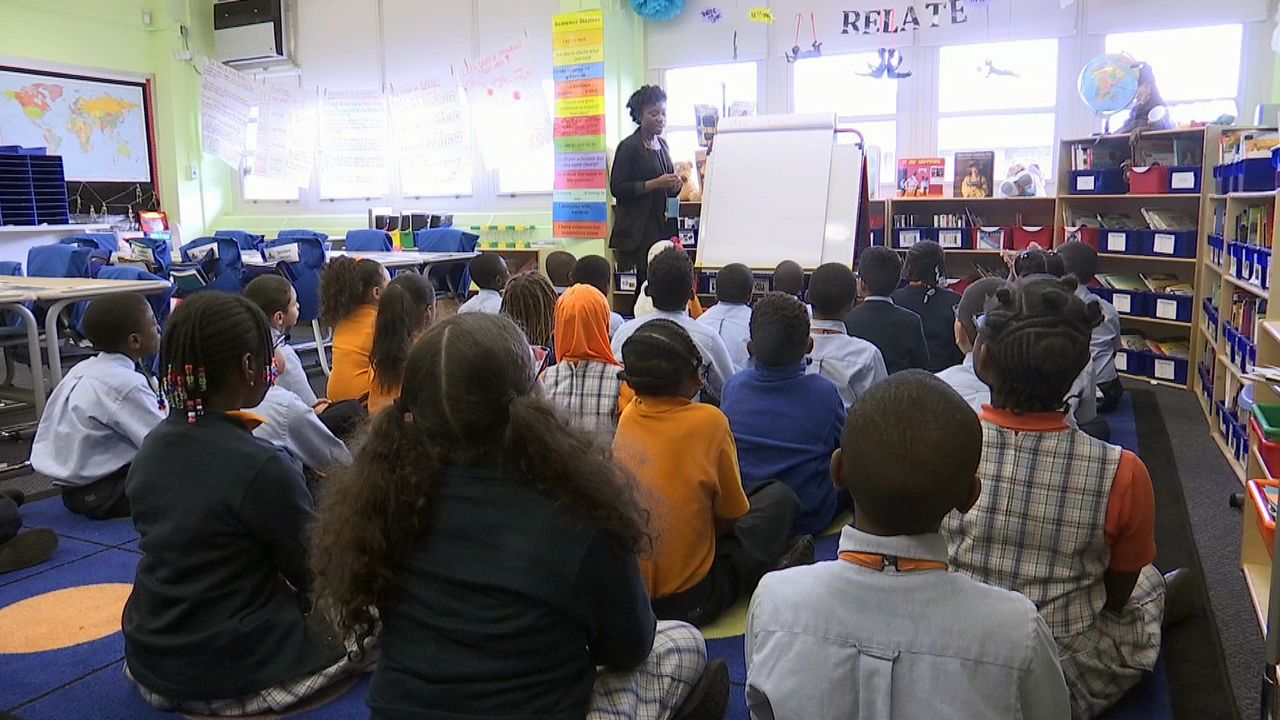NEW YORK — A baseball game at Yankee Stadium. The Nets’ new “big three” at Barclays Center. A concert at Madison Square Garden.
New Yorkers will soon get to watch these kinds of massive spectator events, unthinkable for much of the past year, after Gov. Andrew Cuomo announced that state venues can reopen to spectators at 10% capacity starting Feb. 23.
Indeed, the first such event will be the Nets hosting the Sacramento Kings that evening.
Attendees are required to have recently tested negative for COVID-19, wear face masks, socially distance and stick to their assigned seats.
What You Need To Know
- The state is allowing large arenas and stadiums to reopen on Feb. 23 with certain limitations
- Gov. Andrew Cuomo says the purpose is to balance coronavirus precautions with reopening the economy
- Health experts worry that reopening the arenas could seed more coronavirus infections, especially for arena workers
- Scientific evidence on the risk of coronavirus transmission in large arenas is limited, and New York City is still has high levels of coronavirus test positivity and hospitalizations
The announcement was met with cheers from some sports fans and proponents of efforts to reignite New York’s decimated entertainment economy, especially as supply of the COVID-19 vaccines continues to expand.
Cuomo has frequently spoken about his belief in the importance of balancing health risks and opening the state’s economy.
“While we’re doing vaccines and while we’re controlling the spread of COVID, we also at the same time have to get this economy open and in an intelligent way,” he said Wednesday when announcing the arena reopenings.
But with highly contagious variants of the coronavirus spreading in the state, and city test positivity levels and hospitalizations stagnating, many fear the venues will lead to new clusters of infections, especially for employees of the venues, who may come into contact with hundreds, even thousands, of ticket holders.
Denis Nash, a professor of epidemiology at CUNY, flipped Cuomo’s statement on its head, saying that opening the arenas will actually undermine the city’s vaccination and COVID-19 prevention efforts.
“Doing something like opening up arenas for mass gatherings, particularly indoor arenas, is really at cross purposes with public health goals,” Nash said. “I doubt any epidemiologist would back a plan like this.”
The state Department of Health did not immediately respond to a request for comment.
Cuomo and his aides are relying in large part on two Buffalo Bills football games from January to buffet their reasoning for reopening large event venues. Those two games, which had attendance limited to about 10%, did not result in spikes in cases in Erie County, according to one firm’s analysis of mobility data from attendees of the games.
But Nash cautioned that the analysis was not a scientific study, and its results may not translate to indoor venues.
So far, studies are generally mixed on the health risks of reopening entertainment venues.
One study, conducted at a concert hall in Leipzig, Germany last summer, simulated a musical concert of seated attendees at reduced capacity. The study, which encouraged attendees to get up to use the bathroom and visit concession stands, concluded that concerts in large, high-ceilinged venues posed little infection risk, so long as strict hygiene and testing rules were followed.
The infection risk was lowest when attendees sat socially distanced from one another and air was regularly circulated in the venue.
Yet other studies about prior spread of COVID-19 from large events have suggested that it’s not necessarily the event itself that poses the greatest infection risks but how the attendees get there and what they do before and after.
An Italian study of COVID-19 infections following a soccer game in Italy last year concluded that gatherings on public transportation and at local bars and restaurants “might have had an important role in the diffusion of the disease at the local and regional level, probably with a greater impact than attendance of the match in the stadium.”
In New York City, that could translate to crowded subway trains in and out of a venue over a transit hub, such as Citi Field, Barclays Center and Madison Square Garden. By the time the venues are allowed to be open, restaurants will be able to open for indoor dining at 25% capacity.
But the people facing the greatest risk are likely not the attendees, according to epidemiologists. Instead, it is the arena’s ticket takers, concession stand workers, ushers and maintenance crews who will have the highest likelihood of contracting COVID-19 from a fan, Nash said.
“Each person at a cash register is gonna encounter hundreds, if not thousands, of potential people that day,” he said.
The risk to fans, Nash said, who will be expected to remain in their seats for most of the event, is much lower than an arena worker: “The likelihood that each of those individuals is gonna come up against someone with the virus is very, very different.”
Indeed, infection risk for someone who wears a mask, sits in a socially distanced seat and doesn’t move around through a performance or sporting event may be very low, even for indoor arenas, according to Jiarong Hong, an associate professor of mechanical engineering at the University of Minnesota.
Hong’s team studied the dispersal of aerosol droplet’s in Minneapolis’ Orchestra Hall, a three-story, 2,100-seat concert venue. They concluded that diminished capacity seating, strong ventilation systems and air filtering make risk of infection very low.
Though even within large arenas, there is a risk differential depending on where you sit, Hong said. Since aerosols carrying the virus float upward due to differences in temperature in the air, people sitting closest to the action -- in the priciest seats -- will have a lower density of aerosols around them and thus a reduced risk of getting the virus compared to people in the cheap seats.
“The chances of getting infection is much, much lower for people sitting on the lower levels,” Hong said.
His advice to arenas: “Try to put people on the lower levels, so the aerosols rising up don't affect people sitting higher up.”
Cuomo has touted the testing requirement for attendees of large events as another mitigating factor. To enter the arena, a person must have tested negative for the virus with a PCR test within 72 hours of the event beginning.
“The testing, to me, is key,” Cuomo said. “I can go see the President of the United States, take a test, and if I pass the test, walk into the Oval Office. Why? Because if you're negative, you are negative.”
But Nash said that “there is no scientific basis” for the 72-hour window.
“People can be negative 72 hours before an event, even 48 or 24 hours, and be infectious at the time of the event,” he said. “If this were more science-informed, I would say that people would have to have a negative rapid test at the time of entry into the arena.”
Yet, as Hong noted, there is a limit to what kind of role science can play in the decision to reopen arenas, when the studies that exist so far assume attendees are wearing masks, not yelling too loudly and generally staying on their best behavior.
These are not assumptions most would make of New Yorkers at a Nets game.
“People might get excited, they'll take off the mask, and they'll shout,” Hong said. “That’s human behavior. We cannot predict that.”








